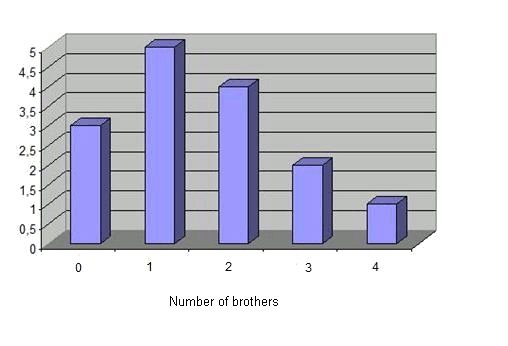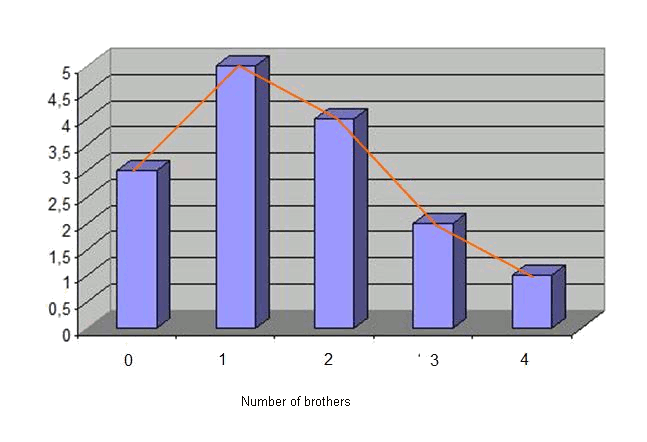Bars diagram
The bars diagram shows the absolute frequencies of some data. The higher the bar, the more the corresponding value is repeated.
The following figure shows the diagram of this following example:
Example
| Brothers | Absolute frequency |

Polygon of frequencies
By joining the middle point of the top of every bar in the bars diagram, we obtain the polygon of frequencies (in orange). Using this example:
Example
| Brothers | Absolute frequency |

